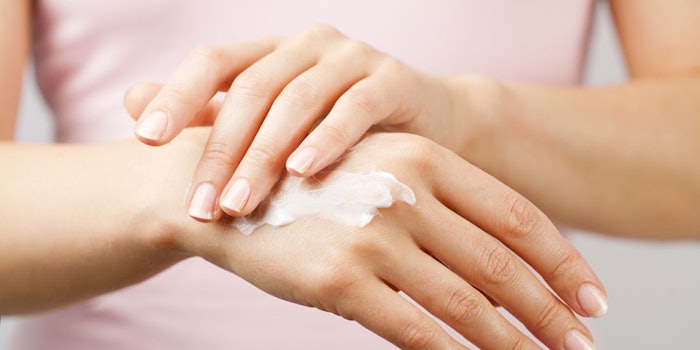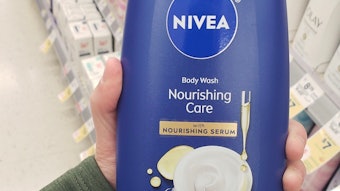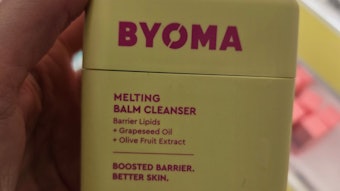
An α-gel that recreates the moisture-holding layer in skin was recently developed by a group of researchers at the Tokyo University of Science and the Miyoshi Oil and Fat Co., Ltd., Japan. What's more, it is easily produced and environmentally friendly.
According to a university press announcement, the study, published in Colloids and Surfaces and led by Kenichi Sakai, Ph.D., successfully synthesized an α-gel using an oleic acid-based surfactant. The resulting gel appears promising for skin care applications. The particular surfactant used is one the researchers had previously developed, and it is structurally similar to the body's natural ceramide—i.e., both are amphiphiles with two tails.
α-gel Properties
After the α-gel was prepared, the team used small- and wide-angle X-ray scattering (SWAXS), nuclear magnetic resonance (NMR) spectroscopy, and an optical microscope to confirm its characteristics. Several mixtures containing different molar ratios of the oleic acid-based surfactant, water and 1-tetradecanol (a fatty alcohol) were prepared and assessed.
SWAXS measurements confirmed the typical lamellar or sheet-like structure of α-gels, which remained highly ordered even when 90% w/w was water. In addition, with further analyis, the researchers found that increasing the molar content of the fatty alcohol in the mixture increased the space between the molecular “bilayers.” They hypothesized this increase in space must have been due to water filling it.
See related: Water Meets Skin, Modern Moisturizers
NMR spectroscopy also showed an increase in fatty alcohol molar content caused a decrease in the movement of protons within the bilayers, which aligns with known characteristics of lamellar gels. Finally, all mixtures in the study showed shear thinning behavior.
Water Solubility
As the university explained, overall, the prepared α-gel’s ability to hold water and spread evenly over surfaces makes it suitable for skin care products such as creams. The oleic acid-based surfactant also is readily soluble in water, so its production is easier and possible at lower energy costs.
Sakai explained, “It is an environment-friendly functional organic material because even when it is added in small amounts, it exhibits surface chemical functions not inferior to those of conventional surfactants.”
'Perfect' Skin Cream Promise
Considering the capabilites of the α-gel, the university press announcement promises: "Cross your fingers; the perfect skin cream may not be long!" What makes the inventors so sure?
They explained that a layer of lipids covers our skin and with its help, our skin retains moisture and remains healthy. In the lipid layer, ceramides form a lamellar gel with cholesterol, fatty acids and water. These gels are mixtures that are thick, do not flow easily and can hold large amounts of water. Natural ceramide is therefore an important factor for water retention in our skin; and the α-gel basically mimicks these entities found in nature.
For more information, contact the Tokyo University of Science website.









